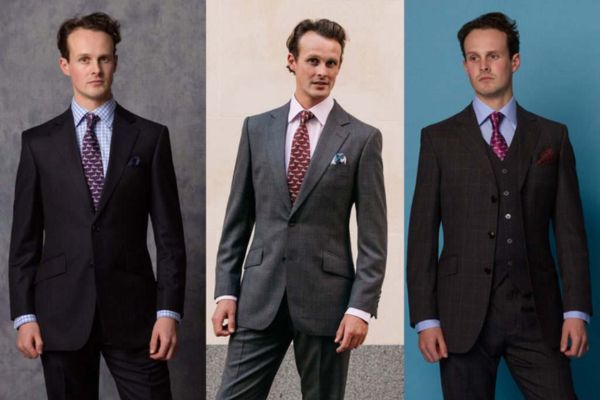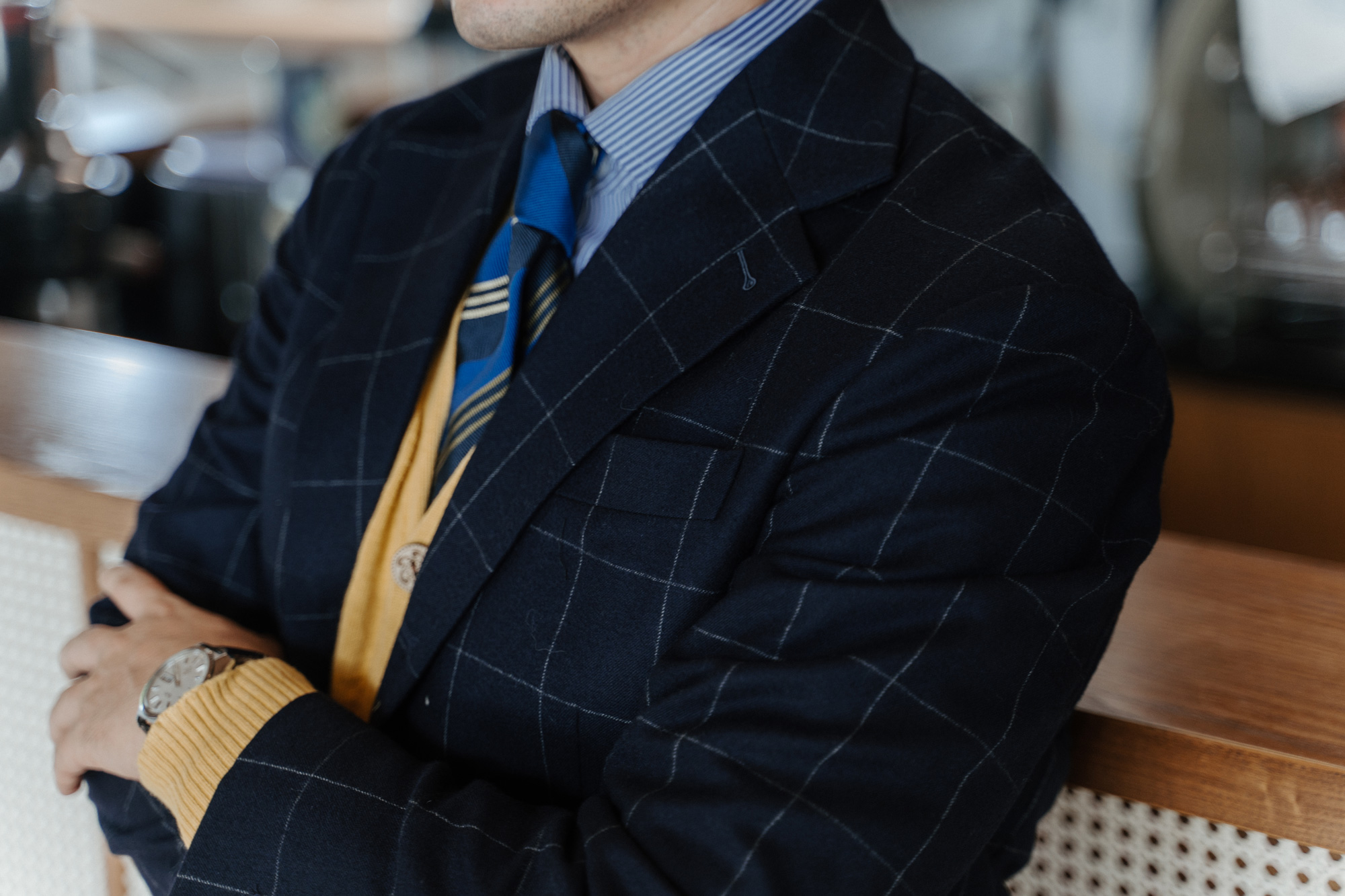Wearing a British suit style is not just about the look. It is an experience that exudes confidence, sophistication, and class. From the classic navy suit to the bold green tweed, British suits have long been renowned for its impeccable tailoring and attention to detail.
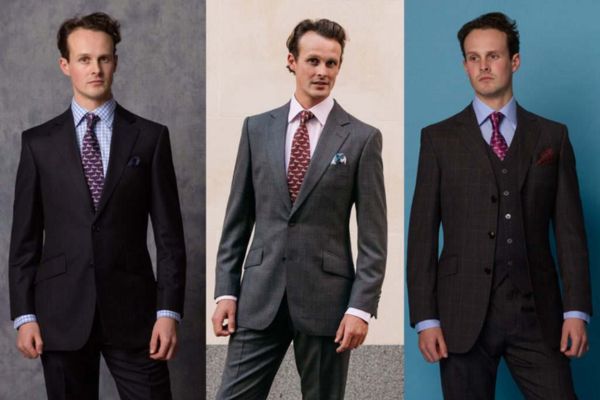
In this blog, we take you on a journey through the history, styles, and etiquette of this iconic fashion staple. So let’s dive in and discover the world of British tailoring together!
History of British suits
Back to the 17th century, British suits have a long and fascinating history till these days. During this time, only men of the aristocracy and upper classes wore suits. They were designed to be practical and durable, with a focus on functionality over fashion.
Over the years, British suits have evolved and become a staple in men’s fashion worldwide. The traditional British suit has become an iconic style that has been emulated and adapted by designers and tailors around the world.
One of the reasons why British clothing style has had such a lasting impact on fashion is due to the skill and craftsmanship of British tailors. Tailoring has been a highly respected profession in Britain for centuries, and British tailors have developed a reputation for their attention to detail and their ability to create bespoke suits that are tailored to each individual’s unique measurements and preferences.
Readmore: American sack suit
What sets British suits apart
British suits consist of three main parts: the jacket, trousers, and waistcoat, which sets them apart from Italian or American suits. Let’s discover the differences in British suit style.
The jacket
The jacket is the most important part of a British suit and is often the focal point of the outfit. A well-tailored jacket should fit snugly around the chest and shoulders, with the sleeves ending just above the wrist bone. British suit jackets often feature structured shoulders, a tapered waist, and a double vent at the back for ease of movement.
Trousers
Trousers are the next important part of a British suit. They should be tailored to fit comfortably at the waist and sit just above the hips. The length of the trousers should end at the top of the shoe, creating a small break at the ankle. British suit trousers often have a tapered leg and a high waistband, creating a streamlined and sophisticated look.
The waistcoat
The waistcoat, also known as a vest, is an optional part of a British suit. It is worn underneath the jacket and adds an extra layer of warmth and style to the outfit. British suit waistcoats are typically made of the same material as the jacket and trousers and are cut to fit closely to the body.
Materials used in English cut suits must be high quality. British wool is the most common material, which is considered to be some of the finest in the world. Cashmere, silk, and linen are also used in British suit making to a luxurious touch.
Readmore: custom tailored suits
Types of British suit styles
Now, let’s explore some British suit styles to easily distinguish English cut suit styles from others.
Classic British suit style
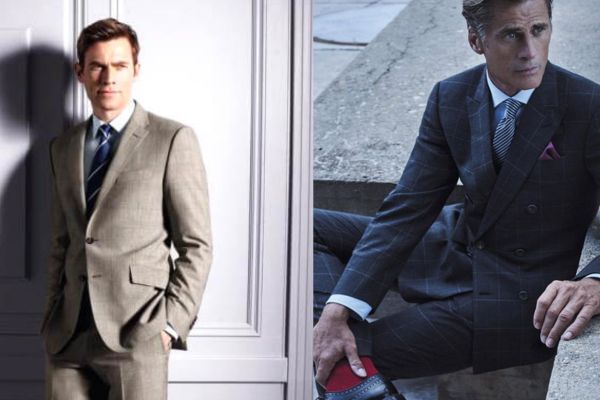
The classic English suit style includes the single-breasted and double-breasted suits. The single-breasted suit is the most common type and has a narrow overlap of fabric down the front. It is suitable for any formal occasion and is versatile enough to be dressed up or down. The double-breasted suit has a wider overlap and is considered to be more formal than the single-breasted suit.
Contemporary British suits
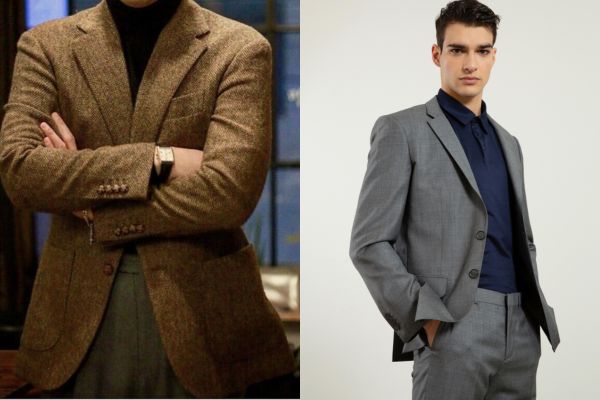
Contemporary British suits include the slim fit and the tweed suit. The slim fit suit has a more fitted silhouette, with a tapered waist and a shorter jacket length. It is a modern take on the classic suit and is suitable for both formal and informal occasions. The tweed suit, on the other hand, is made from tweed fabric and is typically worn for outdoor activities, such as hunting and shooting. It has a rugged and casual look that is perfect for country events.
Traditional British suits
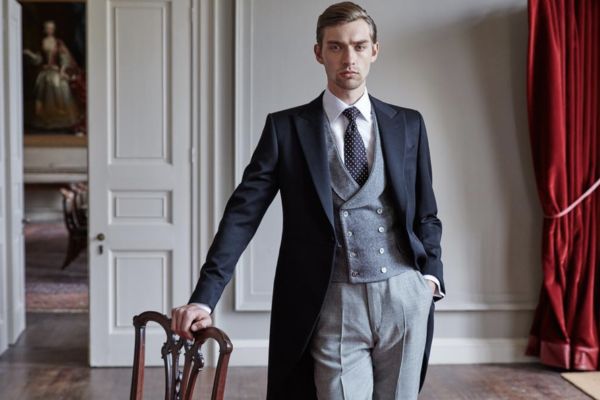
Traditional British suits include morning dress and dinner jacket. The morning dress, also known as a morning coat, is a formal daytime suit that is typically worn for weddings and other daytime events. It consists of a tailcoat, waistcoat, and striped trousers. The dinner jacket, also known as a tuxedo, is a formal evening suit that is typically worn for black-tie events. It consists of a black jacket, black trousers, and a white dress shirt.
As you can see, not all British suits are the same. Not only does each tailoring house have its own style, but some suits have taken on Italian or Continental (European) influences, and show hybrid features from these styles.
For example, in the 1920s and ’30s, the English drape cut was invented on Savile Row. This involves an added volume of cloth in the chest area–the “drape”–originally with a soft, unpadded shoulder, though it would later evolve into versions with heavy shoulder padding worn by Hollywood actors like Clark Gable and Cary Grant.
The drape cut can usually be recognized by the way the chest fabric folds and bunches slightly below the underarms, because of the full chest. This is in some ways the antithesis of the typical slim-fitting British suit, but still has the strong waist suppression to cut an athletic figure, due even more so to the exaggerated chest. It is still made today by a few houses, including Anderson & Sheppard. Although the style has been appropriated elsewhere, if you see the drape cut, you are seeing an originally British concept.
Readmore: Getting clothes made in Hanoi
How to wear a British suit
Wearing a British suit can be intimidating for some, but with the right knowledge, it can be effortless and stylish. Here are some dos and don’ts to keep in mind when wearing a British suit:
Dos:
Make sure the suit fits well. A well-fitted suit is essential to look good in a British suit.
Match the suit with the right accessories, such as a tie, pocket square, and shoes.
Choose the appropriate shirt to wear with the suit. A classic white dress shirt is always a safe choice.
Keep the suit clean and well-maintained. Regular dry cleaning and pressing can keep the suit looking new for years.
Don’ts:
Wear a suit that is too big or too small. It can make you look sloppy and unprofessional.
Wear the wrong type of shoes. Choose shoes that complement the suit and are appropriate for the occasion.
Over-accessorize. Keep it simple and elegant.
Wear a wrinkled or stained suit. It can ruin the entire look of the outfit.
British suits are appropriate to wear for various occasions, such as weddings, business meetings, job interviews, and formal events. It is essential to consider the dress code of the event before choosing a suit. For example, a black-tie event requires a formal suit, such as a dinner jacket, while a business meeting requires a more subtle suit, such as a single-breasted navy blue suit. You can visit Hanoi suit tailor -Tailor Bros to explore exceptional designs for the British suit style.
Conclusion
British suits are a symbol of quality and craftsmanship that have become synonymous with style and elegance. Whether you’re attending a wedding, business meeting, or formal event, a British suit is always an excellent choice. With its rich history, diverse styles, and timeless appeal, the British suit is a must-have in any fashion-conscious person’s wardrobe.


